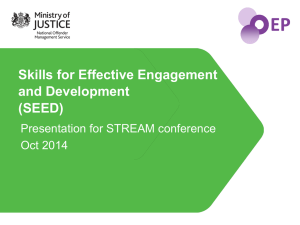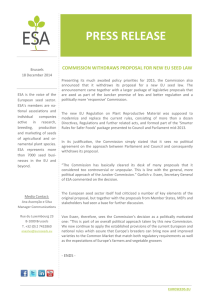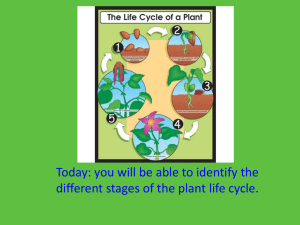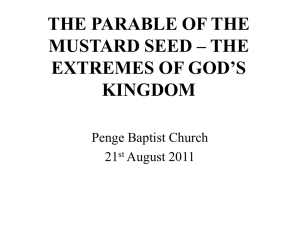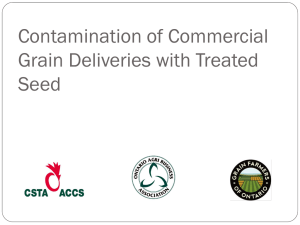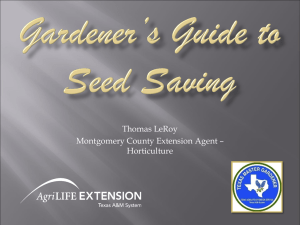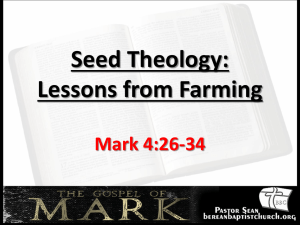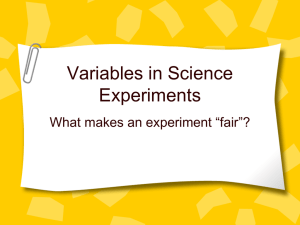August-28-2013.-Updated - Canadian Seed Trade Association
advertisement
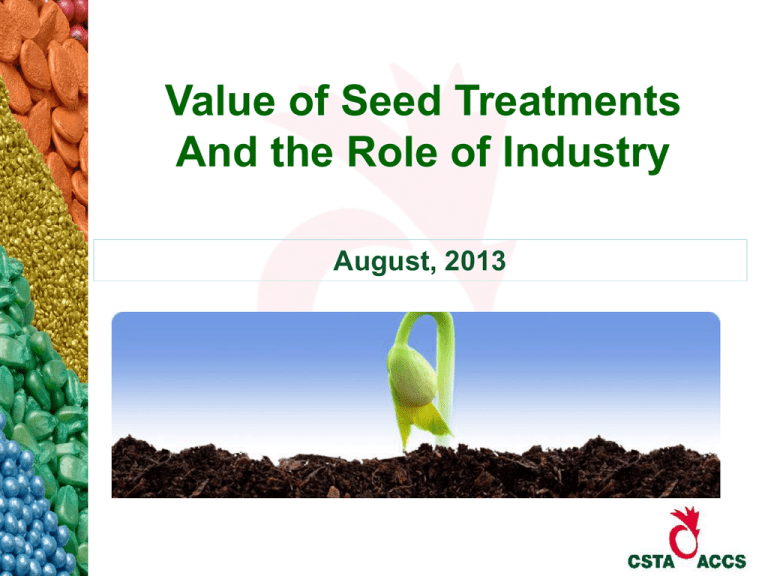
Value of Seed Treatments And the Role of Industry August, 2013 The Industry The Canadian Agriculture and Agri-food system makes a significant contribution to the Canadian economy, directly providing one in eight jobs, employing 2.1 million people and accounting for 8.0% of total GDP. What are Seed Treatments? Definition: the application of biological organisms and chemical ingredients to seed to suppress, control, or repel plant pathogens, insects, or other pests that attack seeds, seedlings or plants. Seed Treatments Began more than 4,000 years ago. Used routinely in Canada since the early 1950s. Modern products introduced in the past 40 years include fungicides, insecticides and other control products. Being used more and more. Why Seed Treatments? Global food supplies are tight. Farmers need access to latest technology and production tools. Farmers will have to increase food production using the same or less land. Help increase productivity, facilitate sustainable farm incomes and use targeted approach. Every seed planted needs to grow! Value of Seed Treatments One of the most advanced and targeted forms of crop protection. Delivery products. mechanism for pest management Improve the production and yield opportunities of crops. Improve plant stand and yield. Help control diseases and insects. Value of Seed Treatments Highly effective tool. Helps produce high quality crops. Control pests. Minimizes impact on people, animals and the environment. Consistent with Integrated Pest Management (IPM) principles. Value of Seed Treatments It is estimated that without the use of crop protection products, like seed treatments, the average % loss would be: 10% loss of crop at post harvest 13% loss due to disease 14% loss due to weeds 5% loss due to insects Neonicotinoid Seed Treatment Highly specific and very efficient form of crop protection. Reduce threats that can destroy a harvest. Targeted and long lasting protection. Protection against above and below-ground pests. Reduced risk of exposure to bacterial and viral disease. Neonicotinoid Seed Treatment Changes in Farming Practices: Farmers needs to maximize their crop production. To maximize yields, seed is now being planted earlier in the year. Protects the seed and seedling from pests associated with early season planting. Neonicotinoid Seed Treatment Protection: Only way to protect the seed from pests. No rescue treatment available. Offers protection when the plant is most vulnerable; seed and seedling. Distributed through the tissues of the growing plant. Concentration becomes increasingly diluted as the plant grows. Neonicotinoid Seed Treatment Environment: Efficient use of pesticides. Precise amounts of insecticides are applied directly to the seed. Low dose. Reduces unnecessary exposure of large amounts of farmland to insecticides and chemicals. Neonicotinoid Seed Treatment Environment continued: More environmentally friendly than alternative methods. Amount of seed-borne insecticide used is typically less than 10% of that applied in-furrow and less than 1% of that from a broadcast/foliar spray treatment. Seed treatments can reduce the number of foliar sprays by up to 4 applications. Neonicotinoid Seed Treatment Improved Health and Cost: May help improve plant health and vigor. Reduce risks. Improve productivity. Cost of agricultural raw commodities could increase by up to 2% without this technology. Value of Seed Treatments Provide a real economic benefit to Canadian farmers, increasing production and positively impacting farm income. Corn: oYields increased from 4.2 to 13.3 bushels per acre. oIncrease of $21 to $67 per acre. oTotalling between $63 and $201 million for corn growers in Canada. Value of Seed Treatments Soybeans: oYields increased from 2.1 to 6.8 bushels per acre. oIncrease of $26 to $108 per acre. Seed Applied Insecticide and Pollinator Health Value Chain Coalition Seed Applied Insecticide and Pollinator Health Value Chain Coalition In light of recent events, CSTA facilitated the creation of a Seed Applied Insecticide and Pollinator Health Value Chain Coalition. Industry led coalition comprised of: o Grower groups; and o Developers, applicators, marketers and users of seed treatments and treated seed. Seed Applied Insecticide and Pollinator Health Value Chain Coalition Coalition members are committed to: Work together with regulators and policy makers, to reduce the dust generated from planting insecticide-treated seed. Inform, educate and train those who choose insecticide-treated seed. Offer untreated seed. Engage the beekeeper community. Seed Applied Insecticide and Pollinator Health Value Chain Coalition Industry has a role to play in mitigating risk to pollinators: 1. Promotion of Best Management Practices 2. Labeling 3. Improved Technology 4. Lifecycle Stewardship 5. Giving Farmers Choice Seed Applied Insecticide and Pollinator Health Value Chain Coalition 1. Promotion of Best Management Practices BMPs for Planting Treated Seed, have been developed, and are being actively promoted along the value chain. Seed Applied Insecticide and Pollinator Health Value Chain Coalition 2. Labeling All insecticide treated seed bags on the market in 2014 will contain additional text reminding growers that the seeds have been treated with an insecticide and directing them to follow BMPs to reduce pollinator exposure to dust at planting. Seed Applied Insecticide and Pollinator Health Value Chain Coalition 3. Improved Technology Substantial resources have been dedicated to improving seed coating quality, seed flow lubricants, and planting equipment. Testing indicates that replacing traditional lubricants could reduce total dust by up to 90% and total active ingredient in the dust by up to 60%. Seed Applied Insecticide and Pollinator Health Value Chain Coalition 4. Lifecycle Stewardship Additional standards are being developed, and will be enforced by the industry, around the handling, storage and use of seed treatments and treated seed, from development to disposal of seed and seed bags. Seed Applied Insecticide and Pollinator Health Value Chain Coalition 5. Giving Farmers Choice We will continue to ensure that farmers have access to a range of products including untreated seed, fungicide-only treated seed, and seed treated with fungicides and insecticides. Seed Applied Insecticide and Pollinator Health Value Chain Coalition Farmers around the world face the challenge of feeding, clothing and fuelling an ever-growing world population. Canadian farmers are in the enviable position to lead that effort. To do so, farmers need access to new technologies to continue to increase productivity in an environmentally sustainable fashion. Seed Applied Insecticide and Pollinator Health Value Chain Coalition Our industry understands that pollinators and crop protection products are complementary and integral components of a sustainable agricultural system. We look forward to an ongoing dialogue and continued action to find sustainable solutions for our industry, the Canadian economy, and the health of our environment.
